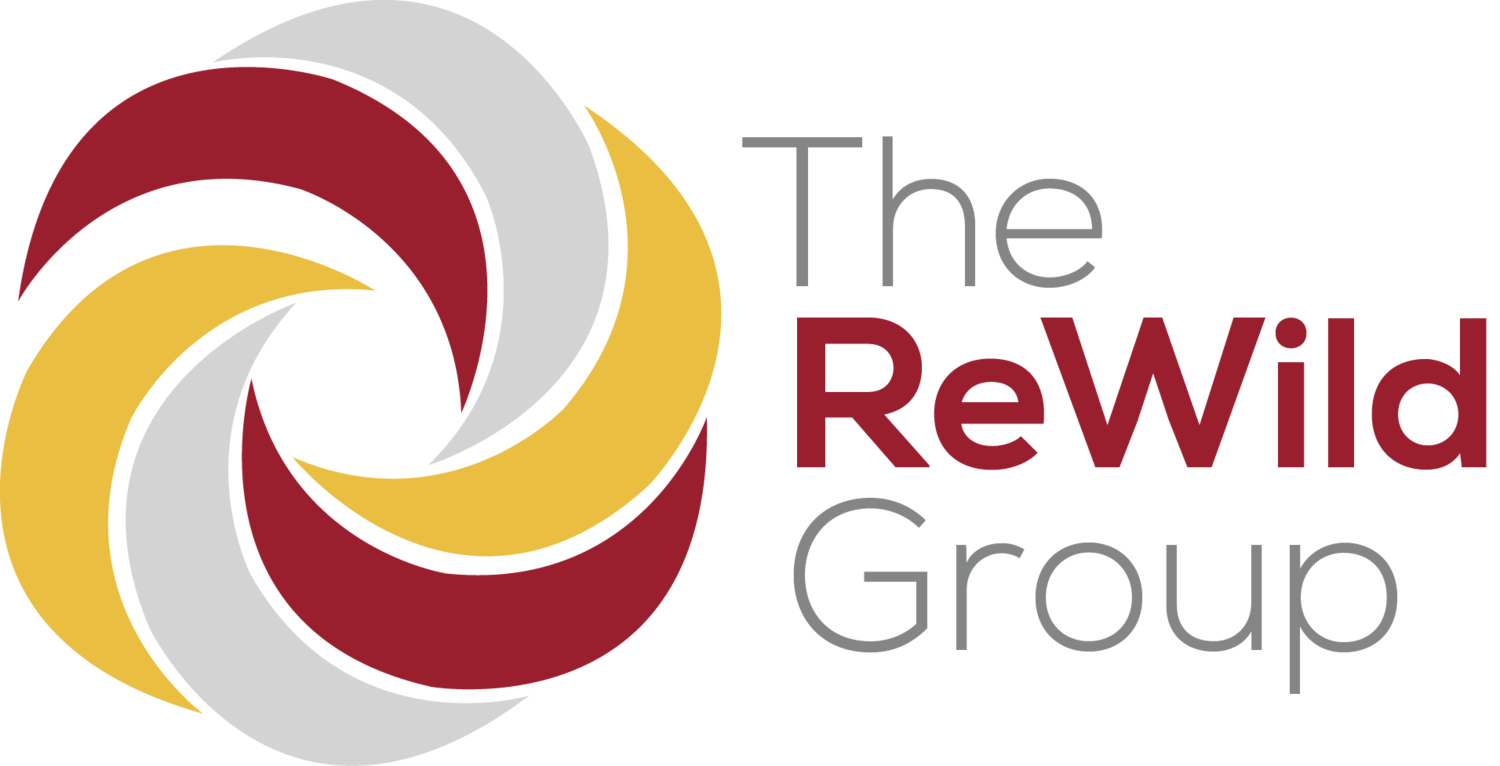
The ReWild Group Blog
Your home for relevant and engaging content serving small business owners and consultants. Subscribe so you don’t miss a post!
The Importance of Leadership Training for Small and Midsize Businesses
Small and midsize businesses (SMBs) face unique challenges in today’s competitive business landscape. Limited resources, rapid growth, and the need to remain agile often stretch owners and managers thin. One critical factor that can make or break these organizations is effective leadership. Leadership training is not just a luxury for large corporations—it’s a necessity for SMBs aiming to thrive, scale, or prepare for a successful exit. By investing in leadership training, businesses can empower their teams, boost productivity, and create a foundation for sustainable growth. The Exceptional Manager Program (EMP) by The ReWild Group LLC offers a tailored solution to help SMBs achieve these goals.
Why the Exceptional Manager Program is the Ultimate Management Training Solution for Your Business
In today’s fast-paced business environment, effective management is the backbone of any successful organization. Whether you're a proactive business owner preparing for growth, a CEO seeking more freedom from daily operations, or a company navigating the chaos of expansion, investing in management training can transform your team and propel your business forward.
What’s Next After You Outgrow EOS?
As a business owner, you’ve likely heard of, if not leveraged, the Entrepreneurial Operating System (EOS) to bring clarity and discipline to your company, driving impressive results in its early growth. With its six key components—Vision, People, Data, Issues, Process, and Traction—EOS is a powerful framework for small businesses, particularly in the early stages of growth.
However, as your business scales beyond 20-50 employees, the simplicity of EOS can start to feel limiting, especially in the critical transition of Stages 3 (Delegation) and 4 (Professional) of The ReWild Group’s Seven Stages of Growth.
EOS’s 6 Components vs. ReWilding’s 11 Elements: A Comparative Analysis for Business Growth
The ReWild Group’s Organizational ReWilding framework and the Entrepreneurial Operating System (EOS) both aim to empower businesses to achieve clarity, alignment, and growth, but they differ significantly in their approach and long-term applicability.
Unleashing Growth with Organizational ReWilding: A Comprehensive Yet Flexible Framework
As a small business owner, transforming your operations can feel daunting, especially with a complex framework. Organizational ReWilding offers a solution with its 11 Elements of an Exceptional Business, designed to foster growth, resilience, and adaptability. Its comprehensive scope and flexible, staged approach mean you can see results without tackling all 11 Elements at once—a practical approach for businesses of any size.
Strategy vs. Execution: A Key Difference Between Organizational ReWilding and EOS
The Thinking-Doing Sequence, a core component of the Organizational ReWilding framework, highlights a key distinction in the type of work an owner or leader undertakes within their organization. At its essence, this difference is encapsulated by the concept of working on versus working in the business. As depicted in the Thinking-Doing Sequence graphic below, working on the business aligns with the left side of the continuum—emphasizing critical thinking and strategy, where leaders focus on big-picture elements.
Common Obstacles on the Road to Building a Resilient, Profitable Business
While no two businesses are exactly alike, they tend to face common challenges. Our extensive research has shown that, regardless of industry or revenue, small and mid-size business owners often encounter similar obstacles based on the number of employees in the company.
These are some of the common challenges that can hinder their growth or lead to stagnation:
8 Reasons to Work on Your Business
At The ReWild Group, we believe in the importance of working on your business. Spending time working on the business, rather than solely in the business, is crucial for long-term success. Here are eight reasons why.
A Quick Comparison Between Growth Groups and Peer Groups
Many business owners are familiar with the concept of peer groups—regularly scheduled meetings with other CEOs or business leaders to share perspectives, get new insights, and learn tips and strategies that will help their business thrive.
While there are a lot of positives to this type of experience, we’ve also found there to be some negatives.
The Three Faces of a Leader - Stage 7
The Stage 7 leader is tasked with reigniting the entrepreneurial spirit that characterized the organization in earlier Stages. They achieve this through creating a compelling vision, one that is shared amongst the Leadership Team and clearly communicated to the entire organization. In contrast to the previous Stage, where the leader guided the Leadership Team in creating the vision for the future, the leader is now collaborating with the Leadership Team to create that vision.
The Three Faces of a Leader - Stage 6
The common misalignment in this Stage comes from a leader who wants to maintain a higher allocation to the Manager or Specialist Faces, not wanting to give up operational oversight, which can result in a frustrated Leadership Team that wants to take on more responsibility.
How to be an effective problem solver
We recently posted about a manager’s role as both Coach and Supervisor. Today, we’re going to delve into the topic of problem solving, a task consistently required of every manager.
Regardless of the industry or area of focus, managers are responsible for the output of their team and serve as a resource when obstacles arise. Although not every manager is naturally a good problem solver, there are techniques that can be learned to improve anyone’s problem-solving skills.
Ownership Thinking
Organizational ReWilding is based on the concept of rewilding in nature, a process that occurs when a missing element is reintroduced into an ecosystem. While there are many useful parallels between the two systems, there is a fundamental difference between them: biological ecosystems come about naturally without human intervention, whereas businesses are consciously created.
The process of starting a business requires someone with vision, imagination, and a high level of risk tolerance; businesses do not spontaneously appear. The owner is concerned about all aspects of the business, including profit, cash flow, competition, employees, and cost control (among others).
The Three Faces of a Leader – Stage 4
In Stage 4, the leader ideally spends 10 percent of their time and energy wearing the Visionary Face, 70 percent wearing the Manager Face, and 20 percent wearing the Specialist Face. Stage 4 is characterized by a leader who is actively developing a management team that leads strong departments.
Leadership Across the Stages of Growth
The Stages of Growth clarifies the optimal number of managers and leaders for a business. This blog post shows what that ideal number looks like across the seven Stages of Growth. This framework serves as the ideal for businesses to follow, with the management and leadership teams growing in proportion to the needs of the organization. In reality, however, many leaders miss these transitions.
The Three Faces of a Leader - Stage 3
In Stage 3, the leader ideally spends 10 percent of their time and energy wearing the Visionary Face, 60 percent wearing the Manager Face, and 30 percent wearing the Specialist Face. Stage 3 is dominated by managing work and people. Since the number of people in the organization has tripled from just two Stages ago, the Manager Face consumes the majority of the leader’s energy. For the first time in the Stages of Growth, the number of people in the organization exceeds the leader’s span of control. This new dynamic drives the need for the leader to delegate work they used to perform themselves.
Gates of Focus in a Stage 7 Business
Stage 7’s Gates of Focus are People, Process, then Profit. The number of employees in a Stage 7 company is double or triple what the company had in the previous stage, an increase that demands for People to be the top priority. The primary way a leader can successfully show a focus on People is by investing in the growth of the Leadership Team. The company is too large for the CEO to have regular, personal interactions with all employees. He or she must rely on the Leadership Team (who in turn invests in the Management Team), as the primary driver of successful employee engagement.
The Three Faces of a Leader – Stage 2
In Stage 2, the leader is ideally spending 40 percent of their time and energy wearing the Visionary Face, 20 percent wearing the Manager Face, and 40 percent wearing the Specialist Face.
Meeting Models by Stage
As an organization grows in complexity, so too does its need for structure to keep the complexity from turning into chaos. One important way organizations add structure is through Meeting Models. In general, smaller organizations are less complex than larger organizations, and necessitate fewer Meeting Models. As an organization grows, it should steadily add structure to more of its meetings.
Gates of Focus in a Stage 6 Business
Stage 6’s gates of focus are People, Profit, and Process. Maintaining a healthy company culture is important with the number of people between 96 to 160, making People the top priority. A big part of an organization’s success of this size is the ability to successfully assimilate new people so they are engaged and effective at their assigned roles. By this stage, the company must be growing a Leadership Team that can take over responsibility of the day-to-day activities of the business from the CEO. The gap between the CEO and incoming employees has never been wider, which is why it’s so important for the layers of leadership to be acting together as a cohesive unit.




















